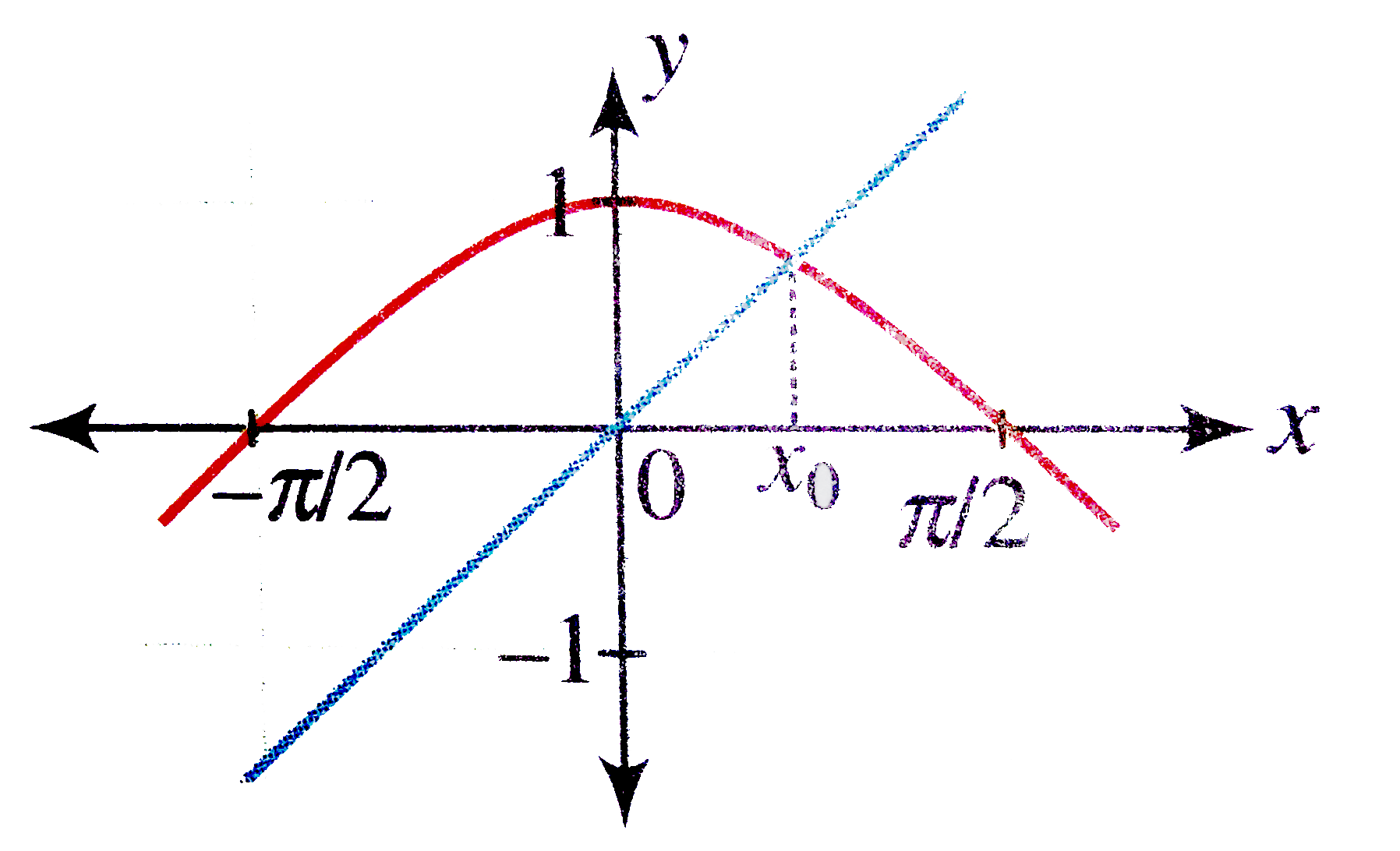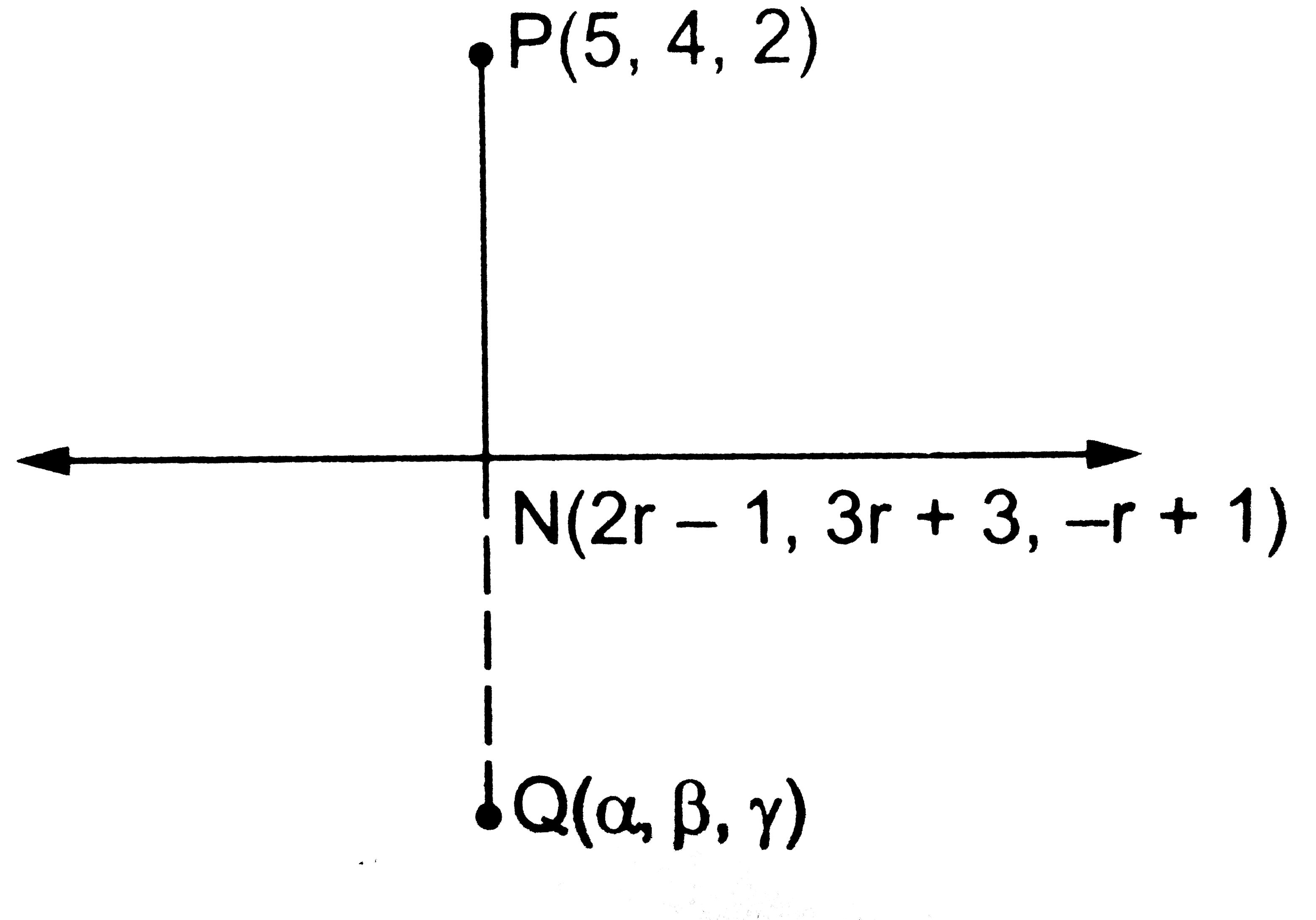InterviewSolution
This section includes InterviewSolutions, each offering curated multiple-choice questions to sharpen your knowledge and support exam preparation. Choose a topic below to get started.
| 3101. |
A plane is parallel to the vectors hati+hatj+hatk and 2hatk and another plane is parallel to the vectors hati+hatj and hati-hatk. The acute angle between the line of intersection of the two planes and the vector hati-hatj+hatk is |
| Answer» Solution :NA | |
| 3103. |
Let=cos x sin 2x , then- |
|
Answer» min `f(X)GT-(7)/(9),x in[-pi,pi]` |
|
| 3104. |
Let sin alpha, cos alphabe the roots of the equation x^(2)-bx+c=0. Then which of the following statements is/are correct? |
| Answer» Answer :a,b | |
| 3105. |
If vec(u),vec(v),vec(w) are the non-coplanar vectors, then (vec(u)+vec(v)-vec(w)).[(vec(u)-vec(v))xx(vec(v)-vec(w))]= |
|
Answer» `VEC(U).(vec(V)xxvec(W))` |
|
| 3106. |
Identify the False statements |
|
Answer» <P>[p`VV`(~Q)]~=(~p)`vv`q |
|
| 3107. |
If (1 - p) is a root of quadratic equation x^(2) + px + (1- p)=0, then its roots are |
|
Answer» 0,1 |
|
| 3108. |
Give the solution of x" sin"^(2)(y)/(x)dx =y dx -x dy which passes through the point(1, (pi)/(4)). |
|
Answer» |
|
| 3109. |
Select the correct answer:Degree of differential equation(d^2y/(dx^2))^2+(dy/(dx))^3+2y=0 |
| Answer» ANSWER :B | |
| 3110. |
The value of lim_(nto oo){3sqrt(n^2-n^3)+n}, is |
|
Answer» `(1)/(3)` `lim_(xto oo) {3sqrt(N^2-n^3)+n}` ` rArr l=lim_(NTO oo) {n 3sqrt((1)/(n)-1)+n}=lim_(n to oo) n{((1)/(n)-1)^(1//3)+1^(1//3)}` ` because a+b=(a^3+b^3)/(a^2-ab+b^2)` `therefore l=lim_(nto oo) n[(((1)/(n-1)+1))/(((1)/(n)-1)^(2//3)-((1)/n-1)^(1//3)+1)]` `therefore l=lim_(nto oo) n[(1)/(((1)/(n)-1)^(2//3)-((1)/n-1)^(1//3)+1)]=(1)/(3)` . |
|
| 3111. |
If f(x)=sin^(-1)[2^(x+1)/(1+4^(x))]," then "f^(1)(0)= |
| Answer» | |
| 3112. |
Solve (x - 1)^n =x^n, where n is a positive integer. |
|
Answer» k=1,2,…......,(n-1) |
|
| 3113. |
Find the equation of plane passing through the intersection of the planes.3x-y + 2z-4 = 0,x+y+z+2=0andPoint (2, 2, 1) |
|
Answer» |
|
| 3114. |
The midpoint of the chord intercepted by the circle x^(2) +y^(2) =16 on the line through the point (1,-2) and (0,-1) is |
|
Answer» ` (-(1)/(2) , -(1)/(2))` |
|
| 3115. |
Let O be the circumcentre and H be the orthocentre of an acute angled triangle ABC. If A gt B gt C, then show that Ar (Delta BOH) = Ar (Delta AOH) + Ar (Delta COH) |
Answer» SOLUTION : From the figure, we have `ANGLE OAH = A - 2(90^(@) - B) = B - C` Similarly, `angle OBH = A - C` and `angle OCH = A - B` Also, `AH = 2R cos A, BH = 2R cos B, CH = 2R cos C` `Ar (Delta AOH) = (1)/(2) (R) (2R cos A) sin (B - C)` `= R^(2) cos (B + C) sin (C - B)` `=(R^(2))/(2) (sin 2 C - sin 2B)` Similarly, `Ar(DeltaBOH) = (R^(2))/(2) (sin 2C - sin 2A)` and `Ar (Delta COH) = (R^(2))/(2) (sin 2 B - sin 2A)` Clearly, `AR (Delta AOH) + Ar (Delta COH) = Ar (Delta BOH)` |
|
| 3116. |
If a,b,c,d are the position vectors of A,B,C,D respectively then the volume of the tetrahedron ABCD is |
|
Answer» `+- (1)/(6) {[a B c] - [a b d] + [a c d] - [b c d]}` |
|
| 3117. |
A, B, C are three points on a horizontal line through the base O of a pillar OP, such that OA, OB, OC are in A.P. If alpha, beta, gamma the angles of elevation of the top of the pillar at A, B, C respectively are also in A.P. then sin alpha, sin beta, sin gamma are in |
|
Answer» A.P. |
|
| 3118. |
Find ((a^(x)-b^(x))^(2))/(a^(x)b^(x))dx(agt0,a!=1,bgt0,b!=1) |
|
Answer» |
|
| 3119. |
Find the nature of the roots of x^(2)-x+1=0 |
|
Answer» |
|
| 3120. |
Find the latus rectum of the parabola 3y^2 =5x |
| Answer» | |
| 3122. |
Solve the following differential equations. x(x-1)(dy)/(dx)-y=x^(3)(x-1)^(3) |
|
Answer» (ii) `y(x-1) = x^(2)(x^(2) - x+c)` |
|
| 3123. |
The orthocentre ofthe triangle formed by the lines 2x^(2)+3xy-2y^(2)-9x+7y-5=0 with 4x+5y-3=0 is |
|
Answer» `(3//5,11//5)` |
|
| 3124. |
If alpha, betaare the roots of ax^(2)+bx+c=0 (a ne 0)andalpha+h, beta +h are the roots ofpx^(2)+qx +r =0 (p ne 0)then the ratio of the squares of their discriminants is |
|
Answer» `a^(2):p^(2) ` |
|
| 3125. |
Evalute the following integrals int (1)/(x^(2) - 3x + 2)dx |
|
Answer» |
|
| 3126. |
Integrate the following functions 1/(1-tanx) |
|
Answer» Solution :1/(1-tanx) = COSX/(cosx-sinx) `1/2[((cosx-sinx)-(-sinx-cosx))/(cosx-sinx)]` =`1/2[1-(-sinx-cosx)/(cosx-sinx)]` therefore` INT dx/(1-tanx)` =`1/2 [x-log|cosx-sinx|]+C` |
|
| 3127. |
State the converse, inverse and contrapositive of Sum of two odd integers is even prepositions. Stating it as a conditional, wherever necessary. |
|
Answer» Solution :If TWO INTEGERS are odd, then their SUM is EVEN. Con :If the sum of two integers is even, then they are odd. Inv: If two integers are not odd,then their sum is not even. CONT: If the sum of two integers is not even then they are not odd. |
|
| 3128. |
If a number of ellipse whose major axis is x - axis and the minor axis is y - axis be described having the same length of the major axis as 2a but a variable minor axis, then the tangents at the ends of their latus rectum pass through fixed points whose distance from the centre is equal to |
|
Answer» `(1)/(2)" UNITS"` |
|
| 3129. |
Determine whether or not each of the defination of ** given below gives a binary opertion. In the event that ** is not a binary opertion, give justification for this. (i) On Z ^(+), define ** by a ** b =a -b (ii) On Z ^(+), define ** by a **b b =ab (iii) On R, define ** by a **b =ab ^(2) (iv) On Z ^(+), define ** by a ** b = |a-b| (v) On Z ^(+), define ** by a ** b =a |
|
Answer» |
|
| 3130. |
Solve for x:log_(b)(x+5)=log_(b)x+log_(b)5. |
|
Answer» Solution :`log_(b)X+log_(b)5=log_(b)(5x)` THEREFORE, `LOG(x+5)=log(5x)`, which is true only when : `x+5=5x` `5=4x` `x=(5)/(4)` |
|
| 3131. |
Graph of ln S^(@) ........... |
|
Answer» |
|
| 3132. |
The locus of the foot of the perpendicular drawn from the origin to any chord of the circle x^(2)+y^(2)+2gx+2fy+c=0 which substents a right angle at the origin is |
|
Answer» |
|
| 3133. |
Lt_(ntooo)(1)/(n)[sec^(2)""(pi)/(4n)+sec^(2)""(2pi)/(4n)+......+sec^(2)""(npi)/(4n)]= |
|
Answer» |
|
| 3134. |
If the sides of a cylic aqudrilateral are 3,3,4,4 shwo that a circle can be inscribed in it. |
|
Answer» |
|
| 3135. |
Evaluate the integrals by using substitution int_(0)^(1)((2x)/(1+x^(2)))dx |
| Answer» | |
| 3136. |
If I_(n)= int x^(n) e^(ax) then I_(n) - (x^(n) e^(ax))/(a ) = |
|
Answer» `(N)/(a) I_(n- 2)` |
|
| 3137. |
Let f(x) =x^(13)-2x^(12)+3x^(11)+…+13x+14 and alpha=cos(2pi)/15+sin(2pi)/(15). If N=f(alpha).f(alpha^(2))……..f(alpha^(14)), then |
|
Answer» NUMBER of DIVISORS of N is 196 . |
|
| 3138. |
In the following figure, identify equal vector |
| Answer» SOLUTION :`vecd=vecb`, because the have the same MAGNITUDE and same DIRECTION. | |
| 3139. |
Three non - zero vectors bar(a),bar(b),bar(c) are complanar if and only if there exist scalars x,y,z, not all zero simultaneously such that xbar(a)+ybar(b)+zbar(c)=bar(0). |
|
Answer» Solution :Let `bar(a),bar(b),bar(c)` be coplanar vectors. Then any ONE of them, say `bar(a)`, will be the linear combination of `bar(b)andbar(c)`. `:.` there EXIST scalars `alphaandbeta` such that `bar(a)=alphabar(b)+betabar(c)` `:.(-1)bar(a)+alphabar(b)+betabar(c)=bar(0),i.e.,xbar(a)+ybar(b)+zbar(c)=bar(0)` where `X=-1,y=ALPHA,z=beta` which are not all zero simultaneously. Conversely : Let there exist scalars x,y,z not all zero such that `xbar(a)+ybar(b)+zbar(c)=bar(0)`. . . (1) Let `x!=0`, then divide (1) by s, we GET `i.e.,bar(a)+((y)/(x))bar(b)+((z)/(x))bar(c)=bar(0)` `:.bar(a)=(-(y)/(x))bar(b)+(-(z)/(x))bar(c)` `i.e.,bar(a)=alphabar(b)+betabar(c)`, where `alpha=(-y)/(x)andbeta=(-z)/(x)` are scalars. `:.bar(a)` is the linear combination of `bar(b)andbar(c)`. Hence, `bar(a),bar(b),bar(c)` are coplanar. |
|
| 3140. |
if f(x){{:( e^(x^(2)+x), x gt0),( ax+b, xle0):}is differentiable at x=0 , then |
|
Answer» a=1,b=-1 |
|
| 3141. |
Find the area of the triangle formed by positive y-axis the normal and the tangent to the circle (x^(2)+y^2)=4 at (1,sqrt(3)). |
|
Answer» |
|
| 3142. |
If A, B and C are three exhaustive and mutually exclusive events such that P(B) = 3/2P(A) and P( C) = 1/2P(B), then P(AcupC) is |
|
Answer» `3/13` |
|
| 3143. |
Which of the following plots represents an ideal binarymixture ? |
|
Answer» Plot of `P_("total") "v/s" X_(B)` is linear (`X_(B)`= MOLE fraction of 'B' in LIQUID phase). |
|
| 3144. |
If P(x) is a polynomial of degree less than or equal to 2 and S is the set of all such polynomials so that P(0)=0, P(1)=1, and P'(x) gt0AAx in [0, 1], then |
|
Answer» `S=phi` |
|
| 3145. |
Let a=a_(1) hati+a_(2) hatj+a_(3) hatk Assertion (A) The identity |veca xx hati|^(2)+|veca xx hatj|^(2)+|veca xx hatk|^(2)=2|veca|^(2) holds for veca. Reason (R) veca xx hati=a_(3)hatj-a_(2) hatk, vec a xx hatj=a_(1) hatk-a_(3) hati, veca xx hatk=a_(2) hati-a_(1)hatj |
|
Answer» Both A and R are true and R is the CORRECT EXPLANATION of (A) |
|
| 3146. |
Find the amount of heat released by an alternating sinusoidal current I= I_(0) sin ((2pi)/(T) t- varphi). during a cycle T in a conductor with resistance R. |
|
Answer» |
|
| 3147. |
Discuss maxima/minima of f(x) = (x)/(1 + x tan x), x in (0, (pi)/(2)) |
|
Answer» SOLUTION :`F'(x) = (1 - x^(2)sec^(2)x)/((1 + x TAN x)^(2))` `= (sec^(2)X (cos x + x)(cos x - x))/((1 + x tan x)^(2))` Now the sign of the derivative DEPENDS on the factor 'cos x - x' only. To check the sign of 'cos x - x', we draw the graphs of y = x and y = cos x.  Clearly, `f' (x_(0)) = 0` and `f'(x) gt 0 AA x in (0, x_(0))` `f'(x) lt 0 AA x in (x_(0), pi//2)` Thus, `x = x_(0)` is the only point of maxima for y = f(x). |
|
| 3149. |
The probability that a vowel selected at random from an English book is 'u' is |
|
Answer» `(5)/(26)` |
|
| 3150. |
Find thecoordinates offoot ofperpendicularand thelengthofthe perpendiculardrawnfrom thepointP(5,4,2)to the linethis line . |
|
Answer» Solution :The vector equation fo thegiven LINE is `vec( R) =(-hat(i) +3hat(J) +hat(k)) + lambda (2hat(i) +3hat(j) -hat(k))`  Clearlyitpassesthrough the point (-1,3,1) andit hasdirectionrations 2,3,-1 So, itsCartesianequationsare `(x+1)/(2) =(y-3)/(3)=(z-1)/(-1)=r` (say) Thegeneral pointon thisline is (2r -1, 3r+3,-r+1) LetN be thefootof theperpendiculardrawn from thepoint `P(5,4,2)` on the givenline. Thenthis POINTIS `N(2r-6,3r+3-r +1)`forsomefixedvalue of r. D.r' s of PN are(2r-6 ,3r-1 ,-r -1) D.r's ofthegiven lineare 2,3,-1 Since PNis perpendicularto the given line (i) we have `2(2r-6)+3(3r-1)-1,(-r-1) =0 rArr 14r =14 rArr r =1` So , thepointN is givenbyy N(1,6,0) Hencethe foot of theperpendicularfrom thegivenpointP(5,4,2) on thegivenline isN(1,6,0) Let `Q(alpha , beta, gamma)` be theimageof P(5,4,2) in thegiven line . thenN(1,6,0)is themidpoint of PQ. `:.(5+alpha)/(2)=1, (4+beta)/(2) " 6and" (2+gamma)/(2)=0 rArralpha =-3 , beta =8 " and" gamma =-2` Hencethe imageof P(5,4,2)in thegivenlineis Q(-3,8-2) |
|